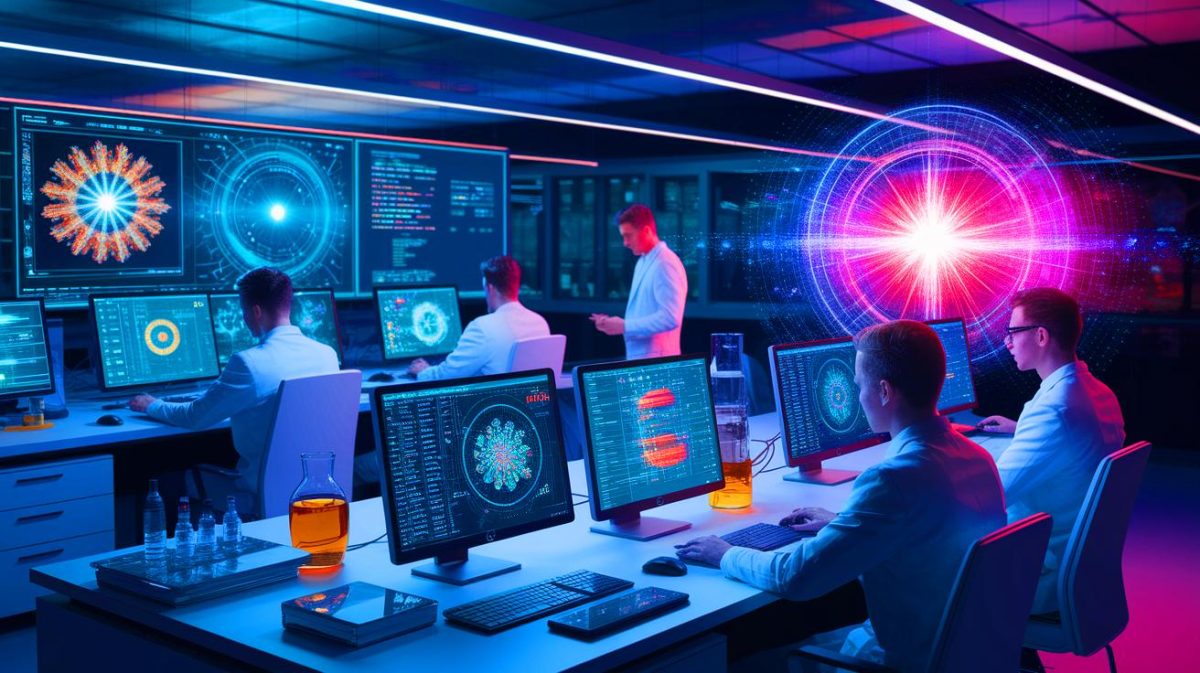| IN A NUTSHELL |
|
The remarkable advancements in nuclear fusion technology have taken a giant leap forward thanks to a groundbreaking algorithm developed by researchers in South Korea. By reducing the computational load needed to predict high-energy particle collisions within fusion reactors, this innovative system promises to accelerate the design and enhance the stability of future reactors. This exciting development, inspired by algorithms used in video games, could significantly impact the future of clean energy. Let’s delve into the details of this fascinating innovation.
Revolutionary Algorithm Transforms Fusion Reactor Design
Researchers at the Ulsan National Institute of Science and Technology (UNIST) have made a significant breakthrough in fusion reactor technology. The team, led by Professor Eisung Yoon, developed an algorithm that increases the speed of predicting particle collisions by a staggering fifteen times. This innovation is not just a minor enhancement; it’s a game-changer. The algorithm’s ability to exclude about 99.9% of traditional calculations through simple arithmetic operations marks a dramatic shift in how collisions are analyzed within fusion reactors.
The application of this algorithm to the Virtual KSTAR (V-KSTAR), a digital model of South Korea’s KSTAR fusion experiment, has proven its effectiveness. By enabling a more accurate visualization of light path distributions and supporting the analysis of magnetic field perturbations, this advancement plays a pivotal role in expanding the capabilities of the V-KSTAR. Such improvements are crucial for the practical realization of fusion as a clean energy source, offering enhanced predictability and stability in fusion reactions.
Borrowing from the Gaming World: A Unique Solution
In an intriguing twist, the UNIST team adapted collision detection algorithms from the gaming industry to solve complex problems in nuclear fusion. Traditional methods, like the Octree approach, require constant spatial calculations, which are computationally intensive. In contrast, the new system activates its processing power only when a collision is likely, drastically reducing unnecessary calculations.
This targeted approach allows the researchers to monitor interactions among approximately 300,000 particles and 70,000 wall triangles with remarkable efficiency. The algorithm also effectively highlights areas of heat concentration on the reactor’s inner wall. This feature allows designers, even those without specialized knowledge, to intuitively identify risk zones, facilitating safer and more efficient fusion reactor designs.
Implications for Safety and Stability in Fusion Reactors
The enhanced speed and efficiency of this collision detection system have direct implications for the safety and stability of fusion reactors. Faster design iterations mean that potential issues can be addressed more quickly, reducing the risk of damage or disruption during the fusion process. The ability to accurately predict and mitigate particle collisions is crucial for maintaining the integrity of these complex machines.
Looking forward, the research team plans to harness the power of GPU supercomputers to further enhance the algorithm’s performance. These advanced computing resources promise even faster processing speeds, which are essential for handling the massive data sets involved in fusion research. The ongoing exploration of GPU capabilities reflects the team’s commitment to pushing the boundaries of what’s possible in fusion technology.
The Future of Fusion Energy: A New Horizon
As the world seeks sustainable and clean energy sources, the advancements made by the UNIST researchers stand as a beacon of hope. By significantly enhancing the speed and accuracy of collision detection, they are paving the way for more reliable and efficient fusion reactors. The publication of their study in the journal Computer Physics Communications underscores the importance of their work and its potential impact on the energy sector.
With plans to conduct further research using GPU supercomputers, the team is poised to make even greater strides in the field. Their innovative approach, inspired by gaming algorithms, highlights the power of interdisciplinary collaboration in solving some of the world’s most pressing challenges. As we look to the future, one can’t help but wonder: how will these advancements shape the landscape of clean energy, and what other unexpected industries might contribute to this transformative journey?
Did you like it? 4.6/5 (25)









Wow, this sounds like a game-changer for fusion tech! 🔥
Is this algorithm applicable to other types of reactors or just fusion?
Finally, a reason to thank video games for something useful! 😂
How soon can we expect to see this implemented in real-world reactors?
This is a significant step forward! Kudos to the UNIST team! 👏
Sounds promising, but what are the possible risks of relying on this new system?
Could this tech be adapted to improve solar power systems as well?
Every advancement in clean energy gets us closer to a sustainable future. Great work!